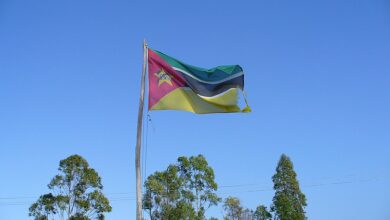Although the Egyptian revolution has been full of highlights, the human shield that pro-democracy protesters formed spontaneously to protect the Egyptian Museum on Tahrir Square on 28 January is an event marked with indelible ink. It was the first time in recent history that civilians immersed in a conflict banded together to protect their heritage.
Irina Bokova, the general director of UNESCO, has repeatedly expressed how remarkable this initiative was, stressing that it showed the profound attachment the Egyptians feel toward their culture and history.
Bokova mentioned this again last week during a two-day conference held in Paris on the occasion of the 40th anniversary of the convention on the fight against illicit trafficking of cultural goods. During this conference, she also decided to set up a team of experts, both from the UNESCO and the International Council of Museums (ICOM), for a short mission to Egypt. There they planned to offer their support and determine what the country needs in order to protect their heritage sites and artifacts, which have been looted in recent weeks.
“Our mission is not to evaluate or inspect Egypt’s museums and archaeological sites in the wake of the revolution,” stressed Christian Manhart, the Chief of the Museums and Cultural Objects section within UNESCO. “We are here mostly to assure the Egyptian authorities of our support in terms of protecting the country’s historical and cultural heritage and also to meet new people in charge and establish contact with them.”
UNESCO will not offer crude financial help, but, according to Manhart, it can offer technical support, send security specialists, conduct a needs assessment, and define priorities.
Zahi Hawass, ex-head of the Supreme Council of Antiquities and former Minister of State for Antiquities Affairs, who could not attend the conference in Paris, has called for the help of the international community. In his address to the UNESCO convention he wrote, “In these dark days, when some of our most important sites are suffering from the depredations of the looters and opportunists who are taking advantage of the current power vacuum, we call upon the international community for help.”
Manhart explained that although Hawass no longer has an official position, “He has a strong commitment to Egypt’s heritage that cannot disappear overnight, and he is still considered an expert.”
Manhart and France Desmarais, Director of Programs for ICOM and responsible for the fight against the illegal trafficking of cultural goods, plan to visit the National Museum, the Giza plateau and Memphis necropolis during their three-day stay in Cairo.
Desmarais explained that immediate action can be taken to establish a “Red List” to classify the stolen Egyptian artifacts that the ICOM will distribute largely in order to curb the trafficking. “When this list is ready it will be sent to Interpol, which will make it accessible to policemen all over the world, to the International Customs Organization, to the US Department of State, to art dealers and to professionals from the ICOM network,” she explained.
The list classifies the stolen objects according to their type, so that nonspecialists, mostly custom officers and policemen, can easily identify a stolen item.
“Egyptian artifacts are the most coveted in the world,” said Desmarais, underlining that art trafficking is the third most profitable after drug and arms trafficking, garnering US$6 billion yearly. According to Desmarais, the value of an artifact picked on an archaeological site can increase 1,000 times before it is sold.
“It is easy to establish the list of the stolen or missing artifacts, but much more tedious and complicated to trace the non-listed objects stolen from sites,” she explained. Establishing a list of these items which have not been classified, listed or photographed is extremely difficult. And, according to Desmarais, these items constitute 90 percent of the illegal objects circulating on the art black market.
Gihane Zaki is the general director of the Nubian Fund and the Egyptian focal point of the World’s Heritage Convention (WHC). Zaki attended the Paris conferences, and made a powerful declaration to the French newspaper Le Monde, calling for “urgent action to protect our heritage, in the same fashion of the action taken in the 60’s when the high dam was built.” In the 60’s, UNESCO helped salvage the Nubian heritage that was at risk of sinking underwater because of the building of the high dam.
UNESCO also helped Egypt build the extraordinary Nubian Museum in Aswan, whose director Ossama Abdel Meguid is also a member of ICOM. He told Al-Masry Al-Youm that in the first days of the revolution he received a letter with the names and numbers of 1,000 residents volunteering to protect the museum. “Fortunately, the museum was safe all along, but still this was extraordinary,” he said.
Lately, UNESCO has been involved in the building of the National Museum of Egyptian Civilization (NMEC) in Fustat, currently under construction. UNESCO and Zaki are considering devoting a section of the new museum to the Egyptian revolution. “This section could be used as a forum on democratization and a space for discussion that would include the powerful new media,” Meguid said.



